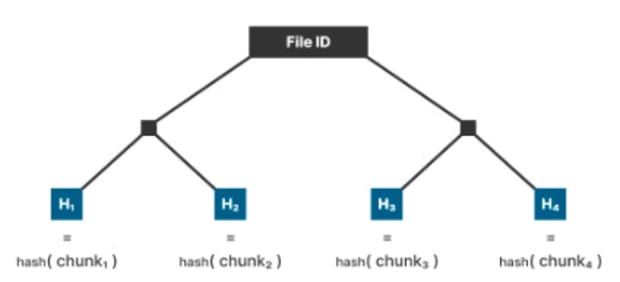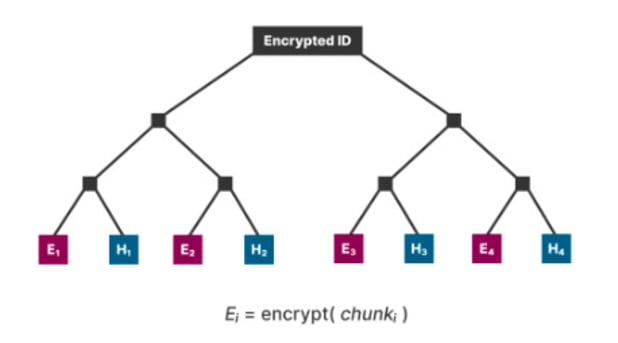The beneath is an excerpt from a current version of Bitcoin Journal Professional, Bitcoin Journal’s premium markets e-newsletter. To be among the many first to obtain these insights and different on-chain bitcoin market evaluation straight to your inbox, subscribe now.
Robert Linus, ZeroSync developer and creator of the BitVM protocol, has created a brand new protocol for incorporating information gross sales and downloads into the trustless safety of Bitcoin’s blockchain, and it might open a brand new realm of makes use of for Bitcoin.
Linus has had a busy profession as of late revolutionizing Bitcoin’s potential. Though a lot of the excitement about Bitcoin within the mainstream is expounded to its monetization and use as a monetary instrument because it more and more turns into entangled with the prevailing world of finance, Linus has undertaken a number of necessary initiatives to maximally harness the blockchain in shocking new areas. Along with his work at ZeroSync to create zero-knowledge proofs, in October, Linus made headlines along with his new BitVM protocol: A technique to create logic gates and complicated computations totally inside Bitcoin’s blockchain. Such performance, at scale, would allow Bitcoin to hold out good contracts to the identical diploma as different tokens like Ethereum, solely with out sacrificing any of Bitcoin’s decentralized traits.
On November 11, Linus introduced the proof-of-concept for a brand new protocol: BitStream. Primarily, the plan is to make the most of Bitcoin’s blockchain to make atomic purchases of varied information packages; in different phrases, purchases that require no middleman and might be accepted or disputed by the customer and vendor purely utilizing the features of their contract. Linus’ whitepaper goes into better element: He particularly attracts consideration to Nostr, a decentralized protocol designed to create censorship-resistant communications.
Though its trustless nature and normal goals are very adjoining to Bitcoin’s ethos, Nostr doesn’t instantly use Bitcoin, and Linus claims that “paid servers for platforms like Nostr typically underestimate their working prices when charging a month-to-month fee for storing a person’s information. Customers can break up their fee into day by day or weekly increments in the event that they don’t belief the servers, however this technique doesn’t resolve the financial challenges servers face. Customers are paying to add their information, so servers will not be paid per obtain.” He went on to state that one of many primary focuses behind BitStream is the requirement that servers are incentivized and compensated, utilizing a pay-for-download foundation.

Though Linus was fast to state among the very straightforward ways in which BitStream’s encryption protocol can be additional difficult, to make the service total safer, he made a proof of the essential fundamentals utilizing a way more simplified mannequin. Primarily, as is extraordinarily frequent in file encryption, the preliminary file is damaged into chunks to kind a Merkle tree, and it then hashes every chunk of knowledge. The brand new File ID is the foundation of this tree, the piece of data that incorporates all of the hashes and not one of the unique information. A one-time pad is then used to encrypt every of the unique chunks, utilizing a special system than the hashes within the unencrypted tree. The hashed chunks and the brand new encryptions of the identical chunks are then paired collectively, into a brand new tree with a brand new root that’s shared with the server.

With the Encrypted ID accessible, an automatic course of can exist the place fee by the vendor is routinely met with the opposite items of knowledge wanted to decrypt the precise file: All encrypted chunks, the hashes of all unencrypted chunks and the unique file ID. If there’s any discrepancy between the encrypted chunks and the unencrypted chunks, it is going to be instantly evident, and the customer can use it as a proof to the blockchain that the transaction is by some means bogus and needs to be refunded. On this approach, a safe methodology for transferring information is reworked right into a trustless contract that financially incentivizes the information server, all utilizing the facility of Bitcoin’s blockchain.

This protocol is enabled with all kinds of Bitcoin’s fee channels, clearly together with the Lightning Community but additionally sidechains like Liquid and a number of other extra obscure options. Additionally it is constructed in an analogous strategy to BitVM, not essentially clogging up Bitcoin’s blockchain by making each step require on-chain transactions, however verification and disputes can simply do that to hold out disputes. When Linus was informed that BitStream does for cupboard space what BitVM does for execution time, and requested in the event that they may very well be mixed, he replied within the affirmative and claimed that he got here up with BitStream first, and wanted to determine how you can generalize it into BitVM.
Though this protocol has had each its supporters and detractors, Linus was succinct when he was requested on Twitter what makes this protocol higher than different storage options? His reply: “It’s bitcoin.” As soon as once more, Linus has discovered a strategy to perform among the features some altcoins have centered their enterprise mannequin round, all utilizing the primary decentralized forex, and never even having destructive unwanted side effects. It’s on this spirit, then, that we must always take into account Durabit: an analogous protocol for utilizing Bitcoin to incentivize and assure the safety of knowledge transfers, albeit with an nameless creator.
Durabit is a protocol constructed on prime of one of many Web’s most infamous protocols, BitTorrent, the file internet hosting service. Though it has gained an immense repute over its 22 years of performance, it requires customers to actively seed the information for additional downloads. If a file is downloaded by customers extra typically than it’s re-seeded, it disappears. Durabit doesn’t suggest a totally trustless methodology to unravel this, though it’s moderately low-trust: A mint runs the protocol, and accepts funds from customers that want to see a file seeded. The mint then makes micro-payouts to seeders at timed intervals, in order that the mint can’t instantly abscond with the funds and the preliminary investor can revoke the remaining funds in the event that they really feel the mint is performing in a dishonest method.
This protocol is much extra area of interest, and for that matter much less trustless than BitStream, nevertheless it nonetheless opens up a really novel use-case within the historical past of Bitcoin. Though the cry of “seed your torrents!” has been a necessary chorus for good Web etiquette for many years now, the disappearance of information from the platform and the difficulties of operating a program like Nostr present that goodwill isn’t all the time sufficient. With Bitcoin, there might be an precise incentive to proceed greatest practices and encourage the free move of data, all with out tying these incentives to an outdoor authority.
Even essentially the most well-intentioned overseer can nonetheless be pressured by exterior forces to cease the move of knowledge, however protocols like these present how data can move with both a tiny arbitrator or none in any respect. Bitcoin has a strong skill to remodel your entire world of knowledge markets, and it’s all contained inside essentially the most basic legal guidelines of Bitcoin’s ethos. If BitStream sees widespread use, if additional nameless Bitcoiners create protocols like Durabit, who is aware of what the probabilities are? After the group begins to innovate on a brand new idea for Bitcoin, the sky’s the restrict.


